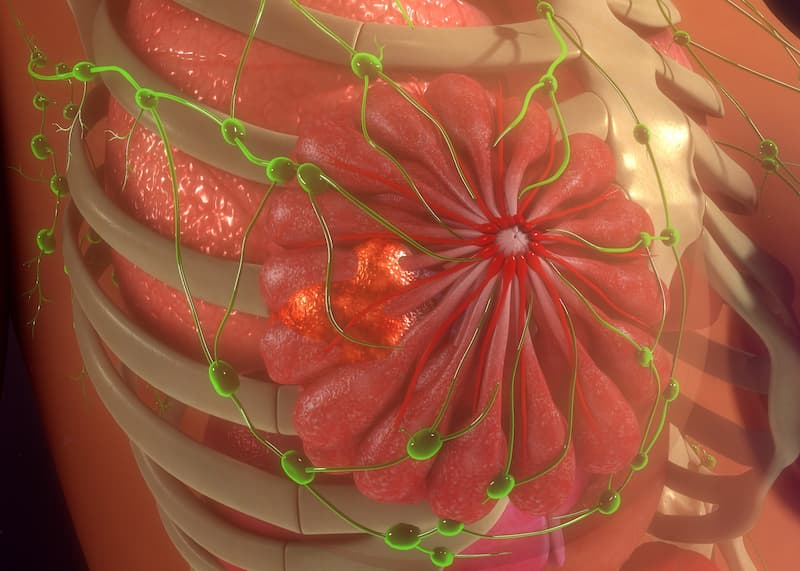FDA Grants Breakthrough Device Designation to Biosignature Test in DCIS
The DCISionRT test has shown to be a significant factor in a clinician’s recommendation on whether a patient with DCIS should receive radiotherapy.
The DCISionRT test has shown to be a significant factor in a clinician’s recommendation on whether a patient with DCIS should receive radiotherapy.

The DCISionRT® test, a risk assessment tool that predicts radiation therapy benefit, has been granted the breakthrough device designation by the FDA as a prediction and prognosis device in patients diagnosed with ductal carcinoma in situ (DCIS), according to a press release from the developer, PreludeDx.1
The device uses protein expression from 7 biomarkers and 4 clinicopathological features to better interpret complex biological information via a non-linear algorithm that accounts for multiple interactions between the individual factors.
In June 2024, the PREDICT study (NCT03448926) highlighted the DCISionRT test as “the most important factor” in determining clinician recommendations regarding radiotherapy for this patient population.2 In October 2024, positive results from a study showed that the device helped identify an increased risk of in-breast recurrence in patients with HER2-positive DCIS.3
“DCISionRT addresses an unmet need for [patients with] DCIS by answering the questions, ‘Do I need radiation therapy?’, and ‘will I benefit?’. DCISionRT helps patients and their physicians to make a better and more informed treatment decision.” Dan Forche, president and chief executive officer of PreludeDx, stated in the press release.1 “We will continue to work closely with the FDA, and we remain committed to providing access to advanced precision diagnostics in breast cancer care that improve patient outcomes through new and innovative tools.”
The device is designed to be used for woman aged 30 to 85 to predict the benefit of radiation therapy after breast-conserving therapy (BCS), to identify patients with residual risk even after BCS, and to give prognosis for a patient’s 10-year risk of breast cancer recurrence.
The PREDICT Trial
The prospective PREDICT study found that 38% of patients had their radiation therapy recommendations changed because of DCISionRT test results, a 20% decrease in total recommendations for radiation therapy (P <.001).4 Of patients initially recommended to not receive radiation therapy, 31% were recommended radiation therapy after the test.
The primary end point of the study was the frequency in the change in clinicians’ recommendations for radiation therapy from before the test to after the test.
The median age at diagnosis was 62 years (IQR, 53-70), median extent of DCIS was 0.7 cm (IQR, 0.4-1.4), and 58% were classified as “low-risk”.
Eligible patients were women of 25 years or older with DCIS who were considering BCS. Patients were excluded if they had a previous breast malignancy, evidence of invasive breast cancer, Paget’s disease, pregnancy, serious comorbidity, and insufficient tumor tissue to perform testing.
The HER2-Positive RRt Trial
This study found that, of a total of 178 patients with HER2-positive DCIS who underwent BCS with chemotherapy, 113 (63%) were identified by the DCISionRT test as having residual risk subtype disease, 28 as having low-risk disease, and 37 as having elevated-risk disease.5 For patients with the residual risk subtype, total in-breast recurrence risk was significantly higher when compared with all other subtypes (HR, 8.3; 95% CI, 1.1-50.0; P = .01).
The primary end point of the trial was testing the hypothesis that patients with the reduced risk subtype would experience a higher in-breast recurrence risk vs those who do not have the reduced risk subtype.
In-breast recurrence was defined as a subsequent ipsilateral, local, or regional DCIS or invasive breast cancer diagnosis following the initial ipsilateral DCIS diagnosis.
Patients with HER2-positive DCIS who had received BCS plus radiotherapy were included in the study. Additionally, patients had to have complete biomarker data and negative margins. Exclusion criteria included prior breast cancer or a simultaneous invasive breast cancer.
References
- PreludeDx receives FDA breakthrough device designation for DCISionRT® test for DCIS breast cancer patients. News release. PreludeDx. January 16, 2025. Accessed January 17, 2025. https://tinyurl.com/5n6ef9a6
- The DCISionRT® test result is the most important factor determining clinician treatment recommendations – findings from multicenter PREDICT study of 2,007 patients. News release. PreludeDx. June 26, 2024. Accessed January 17, 2025. https://tinyurl.com/4ymkxk4y
- PreludeDx announces groundbreaking study results on HER2-positive DCIS patients. News release. PreludeDx. October 2, 2024. Accessed January 17, 2025. https://tinyurl.com/43m545uw
- Shah C, Whitworth P, Vicini FA, et al. The clinical utility of a 7-gene biosignature on radiation therapy decision making in patients with ductal carcinoma in situ following breast-conserving surgery: an updated analysis of the DCISionRT® PREDICT study. Ann Surg Oncol. 2024;31(9):5919-5928. doi:10.1245/s10434-024-15566-5
- Vicini F, Shah C, Mittal K, et al. A 7-gene biosignature for ductal carcinoma in situ of the breast identifies subpopulations of HER2-positive patients with distinct recurrence rates after breast-conserving surgery and radiation therapy. Clinical Breast Cancer. Published September 4, 2024. doi:10.1016/j.clbc.2024.08.016